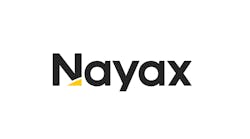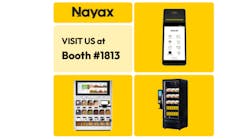Because the recession has forced vending operators to scrutinize their efficiencies, some have discovered the benefits of pre-kitting routes, which has resulted in higher profitability despite lower sales. And while pre-kitting — loading deliveries in the warehouse based on machine needs — is not new in automatic merchandising, many operators are learning that new technology can automate and streamline the process while providing a higher level of accuracy.
Pre-kitting offers:
- Eliminating the “counting trip” for the driver, thus allowing him to service more machines. By carrying the right amount of product, the driver does not need to go to the machine, count what’s needed, and go back to the truck to get it. The trucks can leave the warehouse full in the morning and return empty at the end of the day.
- Lower truck inventories, meaning smaller trucks and lower fuel and maintenance costs.
- More efficient truck loading and machine filling processes.
While pre-kitting requires additional labor to load totes in the warehouse, warehouse labor is less expensive than route labor.
For the operator, this means 15 or 20 percent more machines can be serviced using existing routes, or the same percentage of trucks can be taken off the road.
Achieving significant gains through pre-kitting requires having accurate sales reporting at the machine level. This requires having machines capable of reporting DEX data. It also requires operators to closely manage warehouse and delivery functions, and to train employees accordingly.
While operators can pre-kit routes without using DEX data, par level accuracy will not be as high. Hence, the benefits that DEX-based systems offer cannot be expected without DEX.
The introduction of remote machine monitoring (RMM) in recent years has allowed for more timely reporting of DEX data, which further enhances par level accuracy. To achieve this higher level of accuracy, operators must install RMM hardware in their machines and have systems in place to utilize the RMM data.
Operators of all sizes have been able to pre-kit routes.
PRE-KITTING: ONE OF SEVERAL DEX BENEFITS
Pre-kitting is one of several benefits that DEX provides. Many operators install DEX for other reasons, such as better cash accounting and item-level product tracking, before considering pre-kitting. The amount of work needed to introduce DEX varies based on the age of the equipment, the way the operation is organized, and the capabilities of the staff.
PRE-KITTING IS NOT NEW
Warren Philips, president of Validata, traces pre-kitting back to the mid 1980s in a segment of the vending business in which it is rarely applied today — cold food machines. Philips developed a predictive ordering module for food preparation for food machines. An operator with 100 food machines could determine how much bulk food to order for a certain time period. Once the operator received the order, the food would be made, then sorted into tubs to be loaded onto trucks and delivered to locations.
“Fresh food was a very tough challenge for the vending work place,” Philips said.
The concept soon evolved to the snack and soda sides of the business.
What’s different today, Philips said, is the ability to determine more accurate par levels, thanks to innovations like handheld computers and RMM. He said there are still operators pre-kitting using data based on paper route slips, in addition to handhelds and RMM. “The more scientific you are, the more accurate you are,” he said.
Philips said vending management software systems such as his are interfacing with different order entry points, such as a handheld computer, an RMM device, a desktop computer or an Internet Website.
PRE-KITTING EVOLVES
Premier Food Service in North English, Ia. began pre-kitting snack machines with route tickets 12 years ago, noted Carl Miller, company owner. He had no vending management software at the time. Miller found it saved him time to pre-pack his snack bins.
Miller hired his first employee to pick snacks for the snack machines. At that time, he didn’t see the need to pre-kit the other products.
Last year, Miller introduced CompuVend software to generate pick lists for all of his machines. He hired a computer specialist to develop a network of display screens using battery-powered wireless screens. The screens display pick lists in the warehouse for employees to use to load totes.
Miller’s par levels are based on historic sales information. The software generates more accurate pick lists, resulting in his trucks returning with only 10 to 15 percent left in the snack totes. Since adding vending management software, he has begun to pre-kit the gum and mint, motel sundries, cold food and beverages.
Pre-kitting has made a huge difference to H & L Tom’s Distributors Inc. in Virginia Beach, Va., according to Rick
Matthews, owner. The company, which has three routes year round and five during the school year, is more profitable despite a 10 percent drop in sales over the past year. Pre-kitting has helped to reduce operating costs to offset the drop in revenue.
“Everything that’s in there (the vehicle) is going to be in the machine today,” Matthews said. He has also been able to replace step vans with more fuel efficient (and comfortable) cargo vans. Both the company and the employees have benefitted.
Matthews custom designed his own Windows-based pre-kitting software. It has taken him five years to pre-kit all of his routes. His drivers use a cellular phone to send him machine data for all machines on the route. He then determines the quantities of each item to pack to refill each machine. Managing product par levels in conjunction with dynamic scheduling is key to the operation.
“The route man doesn’t make any decisions,” Matthews
said. He noted that all delivery vans leave full and return empty. He hopes to eliminate the need for drivers to send data from the location by introducing RMM. He plans to install RMM devices from InOne Technology in the machines. He is presently working on the software that will allow the InOne device to automatically download to his management software.
TECHNOLOGY MAKES PRE-KITTING MORE FEASIBLE
“The accuracy of pre-kitting (without RMM) was questionable,” noted Terry Hovis, director of implementation and customer care at Cantaloupe Systems, which provides RMM solutions. “Forecasting (without RMM) is an educated guess.” RMM, he said, eliminates the need for forecasting since you have current data to use to determine par levels. “The end result is a very accurate pre-kit,” he said.
Hovis said operators using RMM are scheduling their warehouses to pick orders in the evening so they can use more current data.
Most operators have observed that pre-kitting is more critical in the snack machine since there is more variety there than in other machines.
Atlanta Vending in Atlanta, Ga. recently pre-kitted two routes, noted Barton Shaw, co-owner. The company began pre-kitting after installing Cantaloupe Seed boxes (RMM devices) on most snack and drink machines. Shaw said the Seed boxes provide accurate and timely data to allow the warehouse to determine accurate par levels for both snacks and drinks.
The drivers pick up the pre-picked snack totes in the warehouse and load the cold drink cases, which are not pre-picked.
Shaw tested pre-kitting prior to installing RMM, but he was concerned about the accuracy of the data. “They (the data) are estimates of what the machine will need and not (based on) actual machine usage,” he said. “It’s not as accurate as telemetry (RMM) data.”
Shaw believes the timely and accurate data RMM provides is even more important during periods when a changing economy is impacting sales. An RMM-based system removes the need for someone to review machine par levels.
D &R Canteen, a 20-route operation in Rochester, Minn., introduced pre-kitting to its dedicated soda route, noted Stu Riemann, general manager. The drivers download data on MEI Easitrax DEX handhelds. Par levels are based on monthly history on an individual location basis. The truck leaves the warehouse full and returns empty.
The move has allowed the company to switch to a smaller vehicle, which gets better mileage and maintenance costs.
Riemann saw a lot of benefit pre-kitting the soda route since the company operates a number of glassfront beverage machines, which are more service and labor intensive than closed-front machines. Prior to pre-kitting, the beverage truck had to inventory a lot of variety. “You no longer have to do that with the pre-kitting,” Riemann said.
Besides lowering the work load, pre-kitting also reduced the level of damage done to products in the truck. “As that bottle bounces around, labels get beat up,” he said.
D & R Canteen is currently working on pre-kitting its snack machines, Riemann said. He said he will look at pre-kitting cold food machines, but he doubts he will consider it for hot drink machines.
SYSTEM INTEGRATION MAKES PRE-KITTING EASIER
The fact that RMM hardware now integrates to many vending management software (VMS) systems makes pre-kitting more feasible for operators.
RMM systems alone allow operators without VMS software to pre-kit since the dominant RMM systems offer Web-based software. “Our VMS system is perfect for the small operator,” said Gene Ostendorf, CEO of InOne Technology, which offers RMM and cashless systems. “And we are utilizing the new VDI (Vending Data Interchange) standard to integrate to the more fully-featured VMS packages used by larger operators.”
Monumental Vending, a 16-route operation based in Beltsville, Md., began pre-kitting in 2005, noted Craig Kushner, president. Each route took four or five months to have all of the machines capable of reporting DEX in a uniform data stream. Drivers had to be trained to use the DEX handhelds. Streamware, the company’s software provider, assisted with the training.
Every evening, the Streamware system automatically prints route loads for the next day’s deliveries. The warehouse crew packs the bins and the drivers simply load these bins onto their trucks in the morning.
The Streamware system determines the par levels for every product. The par levels are based on an average from the previous six trips. The trucks typically leave the warehouse full in the morning and return empty at the end of the day.
Kushner estimated that pre-kitting delivered a 40 percent productivity gain. This is in addition to other DEX benefits, such as electronic cash accountability and line item product tracking.
Locations with highly variable sales, such as hospital emergency rooms, presented a challenge since machine inventory needs are difficult to predict. To address this, Monumental Vending utilized RMM in these accounts.
‘PICK-TO-LIGHT’ PRODUCT PICKING EMERGES
In the past year, Monumental Vending achieved even greater savings by introducing a “pick to light” warehouse picking system. Developed by a vending operator, the LightSpeed “pick to light” system alerts the company’s warehouse packers how much of each product to pick from a moving row of product bins. The picker does not have to find products from a list; they simply pull from bins the amount they are alerted to pick. “You’re not finding Snickers, you’re just taking as many products the light says to take,” Kushner explained.
The LightSpeed system allowed him to cut his picking staff in half while eliminating almost all picking errors.
Several other vending operators have also benefitted form the “pick to light” system. The methodology has long existed in distribution intensive industries such as the commercial record/DVD industry.
The current economic climate and the evolution of vending technology have given vending operators good reason to consider pre-kitting. Operators need to educate themselves about the capabilities of new management software and hardware.
FOR MORE INFORMATION, CONTACT
Cantaloupe Systems, 866-986-7333, www.cantaloupesys.com
Compuvend, 800-341-7677, www.compuvend.com
Crane Streamware, 800-478-7326, www.streamware.com
InOne Technology, 410-666-3800, inonetechnology.com
MEI, 800-345-8215, www.meiglobal.com
LightSpeed, 888-400-5744
Validata, 334-834-2324
Talking Points
* Pre-kitting transfers picking tasks from the routes to the warehouse.
* The vending machines must be capable of reporting data reliably and the company’s management systems must support pre-kitting for it to work.
* Evolving technology provides more accurate business data, enhancing the benefits of pre-kitting.
* Pre-kitting can make routes 15 to 20 percent more productive.








